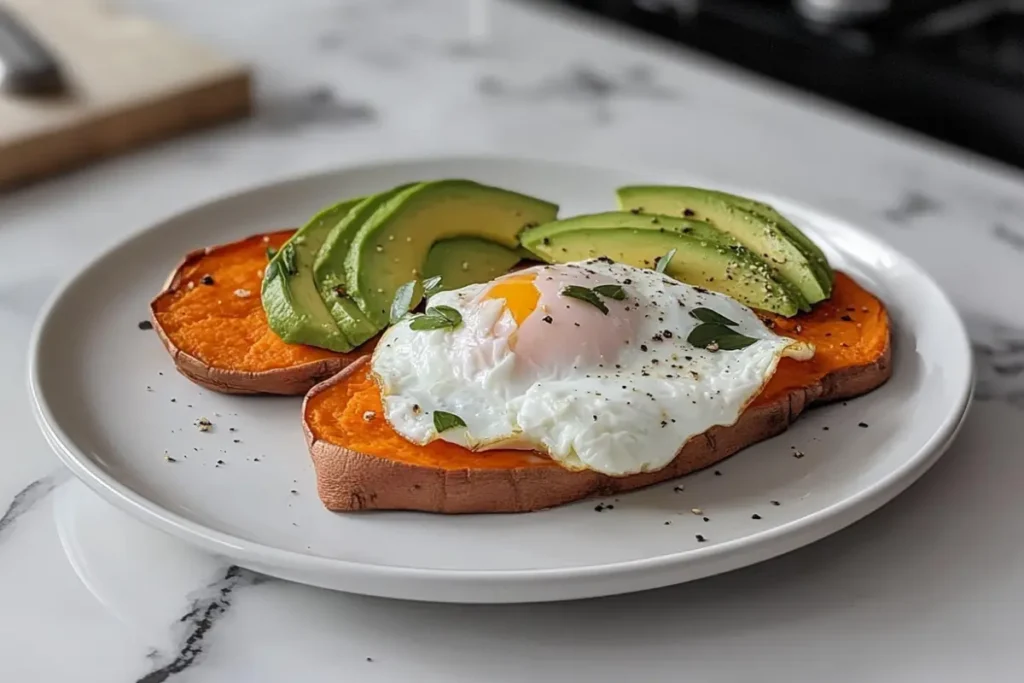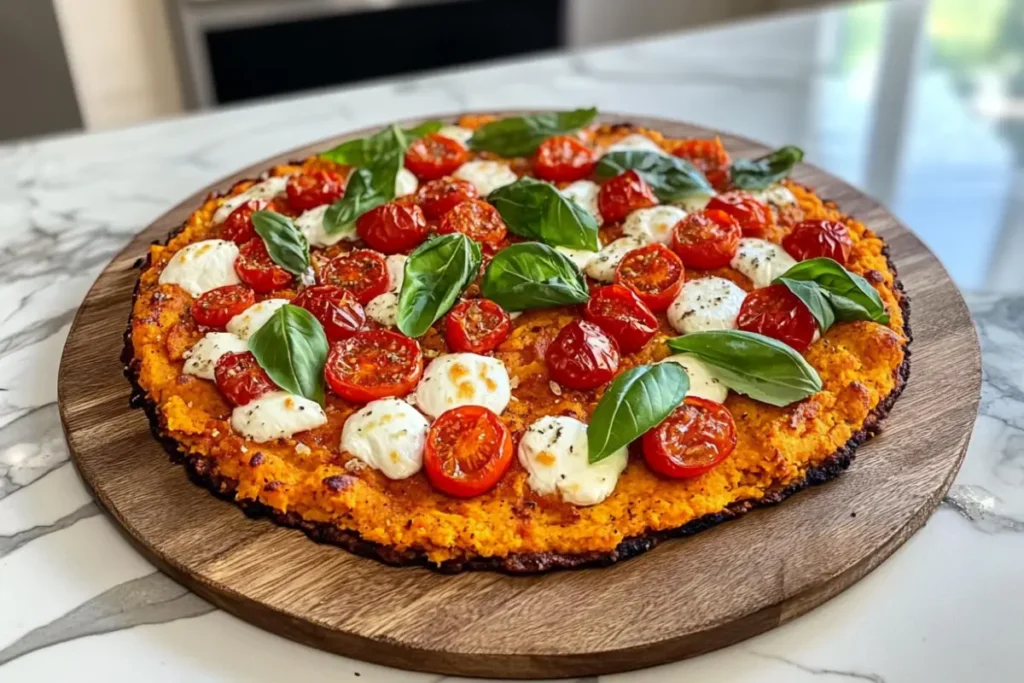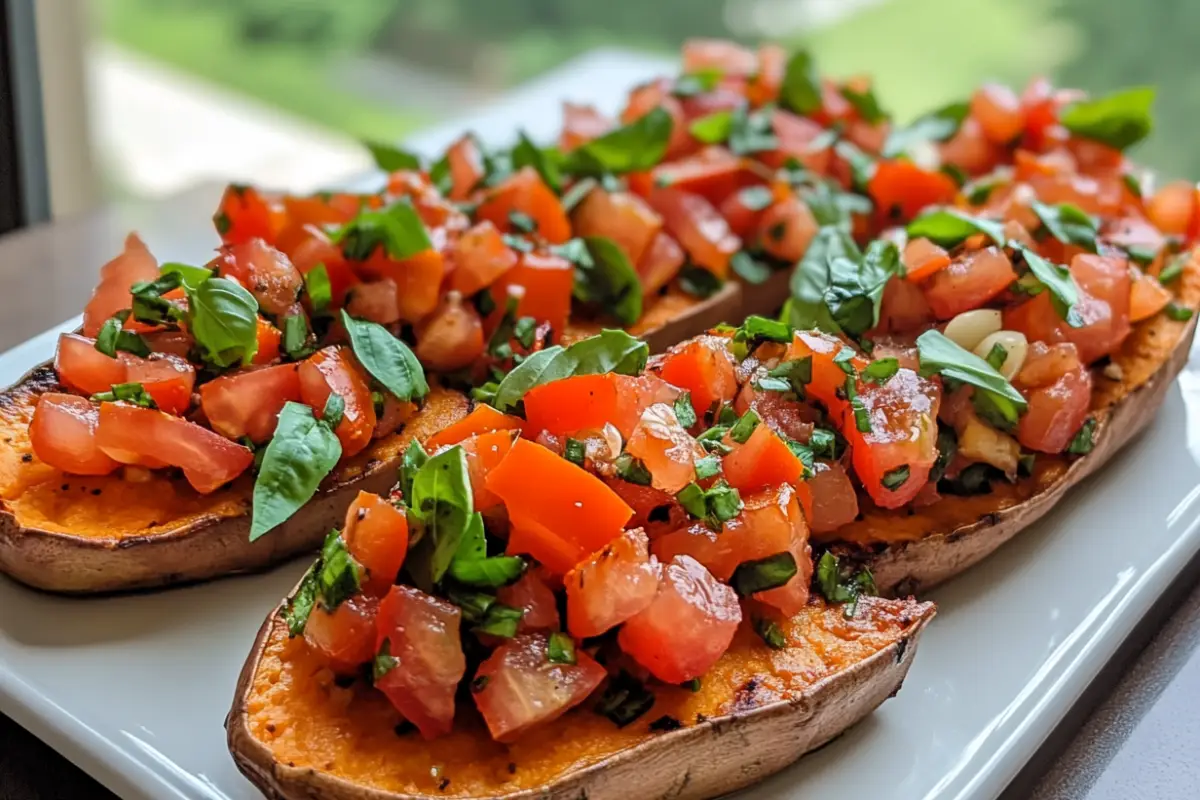Last Updated on February 12, 2025 by Souhail
Bread has been a staple food for centuries, but with the growing interest in low-carb, gluten-free, and whole-food diets, many people are seeking healthier alternatives. One such option gaining popularity is sweet potato. But is sweet potato a good substitute for bread?
Sweet potatoes offer a unique combination of natural sweetness, fiber, and essential nutrients that bread often lacks. They’re naturally gluten-free, making them a great option for those with gluten sensitivities or celiac disease. Additionally, sweet potatoes are a whole, unprocessed food that can fit into a variety of diets, from paleo and keto to vegan and vegetarian.
In this article, we’ll explore whether sweet potato can truly replace bread in terms of nutrition, taste, and versatility. We’ll also cover how to use sweet potato as a bread substitute, the health benefits, potential downsides, and creative ways to incorporate it into your meals.
Whether you’re looking to cut back on refined carbs or simply want to try something new, this guide will help you decide if sweet potato is the right choice for your dietary needs.
Table of contents
Why Consider Swapping Bread for Sweet Potato?
Many people turn to sweet potato as a bread substitute for several reasons:
- Gluten-Free Option
Unlike most traditional bread, sweet potatoes are naturally gluten-free. For those with celiac disease or gluten sensitivities, using sweet potato instead of bread can help avoid discomfort, bloating, and other digestive issues. - Lower Carb and Glycemic Load
Sweet potatoes have a lower glycemic load compared to white bread. This means they won’t cause the same blood sugar spikes that refined bread does, making them a better choice for those managing diabetes or trying to maintain steady energy levels throughout the day. - Rich in Nutrients
Sweet potatoes are packed with vitamins and minerals that bread often lacks. They are an excellent source of:
- Vitamin A (supports immune function and eye health)
- Vitamin C (boosts the immune system and promotes skin health)
- Potassium (important for heart health and muscle function)
- Fiber (aids in digestion and promotes satiety)
In contrast, many types of bread — especially white bread — are heavily processed and stripped of nutrients during production.
- Whole-Food Alternative
Sweet potato is a natural, whole-food alternative to processed bread. Many health-conscious individuals prefer whole foods because they are less likely to contain additives, preservatives, and refined sugars.
How to Use Sweet Potato as a Bread Substitute
Sweet potato can be used in a variety of ways to replace bread. Here are some ideas:
1. Sweet Potato Toast

One of the most popular ways to swap bread for sweet potato is by making sweet potato toast. Here’s how:
- Slice a sweet potato into ¼-inch thick slices.
- Place the slices in a toaster or oven until they are cooked through and slightly crispy on the outside.
- Use the sweet potato slices as a base for toppings, just like you would with bread.
Topping ideas:
- Avocado and egg
- Peanut butter and banana
- Hummus and roasted vegetables
- Cream cheese and smoked salmon
2. Sweet Potato Sandwich Slices
You can also use thick slices of roasted sweet potato as a replacement for sandwich bread. This works particularly well for open-faced sandwiches or mini sliders.
- Roast large, round slices of sweet potato in the oven until they’re tender.
- Use them as a base for toppings like grilled chicken, veggie burgers, or cheese and deli meats.
Nutrition Comparison: Sweet Potato vs. Bread
Let’s compare the nutritional profiles of sweet potato and traditional bread to see why it makes a healthier option.
| Nutrient | Sweet Potato (100g) | White Bread (100g) |
|---|---|---|
| Calories | 86 | 265 |
| Carbohydrates | 20g | 49g |
| Fiber | 3g | 2.7g |
| Protein | 1.6g | 7.5g |
| Fat | 0.1g | 3.2g |
| Vitamin A | 283% of Daily Value | 0% |
| Potassium | 337mg | 115mg |
As shown in the table, sweet potatoes offer fewer calories, more fiber, and significantly more nutrients than white bread.
Pros and Cons of Using Sweet Potato as a Bread Substitute
Pros
- Nutrient-dense
- Naturally gluten-free
- Lower glycemic index than refined bread
- Versatile and can be used in many ways
- Supports whole-food diets
Cons
- Different texture than bread
- May require more preparation time
- Not as portable as store-bought bread
- Shorter shelf life than bread
Creative Ways to Incorporate Sweet Potato
1. Sweet Potato Toast
- Sweet potato toast is one of the most popular ways to replace bread. It’s a simple, versatile option that works for breakfast, lunch, or even snacks.
- How to Make Sweet Potato Toast:
- Slice a medium sweet potato into ¼-inch thick slices lengthwise.
- Pop the slices into a toaster or bake them in the oven at 400°F (200°C) for about 20 minutes until tender and slightly crispy.
- Use the slices as a base for your favorite toppings.
- Topping Ideas:
- Avocado and Poached Egg: A classic combination with healthy fats and protein.
- Peanut Butter and Banana: A sweet option for a filling breakfast or snack.
- Hummus and Roasted Vegetables: Perfect for a savory, plant-based meal.
- Cream Cheese and Smoked Salmon: A luxurious twist on traditional bagels.
2. Sweet Potato Burger Buns

Ditch the traditional burger bun and use roasted sweet potato rounds instead. This is a great option for those looking to cut back on refined carbs or avoid gluten.
How to Make Sweet Potato Burger Buns:
- Slice a large sweet potato into rounds about ½-inch thick.
- Brush both sides with olive oil and season with salt and pepper.
- Roast in the oven at 400°F (200°C) for 25-30 minutes, flipping halfway through.
Once roasted, use the sweet potato slices as top and bottom buns for your favorite burger.
Burger Ideas:
- Beef Burger with Cheddar and Arugula
- Grilled Chicken Burger with Avocado and Chipotle Mayo
- Vegetarian Burger with Black Bean Patty and Salsa
3. Sweet Potato Flatbread
If you’re craving something to hold your sandwich fillings, sweet potato flatbread is a great option. It’s soft, slightly chewy, and naturally gluten-free.
How to Make Sweet Potato Flatbread:
- Combine 1 cup of mashed sweet potato with 1 cup of gluten-free flour.
- Knead into a dough and roll it out into thin rounds.
- Cook on a hot skillet for 2-3 minutes per side until golden and slightly puffed.
This flatbread can be used as a wrap for sandwiches or served alongside soups and stews.
4. Sweet Potato Sliders
For a fun, bite-sized alternative to traditional bread sliders, use sweet potato slices as mini burger buns. These are great for appetizers, snacks, or parties.
How to Make Sweet Potato Sliders:
- Slice a sweet potato into ½-inch thick rounds.
- Roast or grill the rounds until tender.
- Stack your fillings between two rounds, just like a mini sandwich.
Filling Ideas:
- Pulled Pork with Coleslaw
- Grilled Portobello Mushroom with Pesto
- Turkey and Cranberry Sauce
5. Sweet Potato Breakfast Sandwich
Instead of using an English muffin or bagel, sweet potato slices can create a hearty, healthy base for a breakfast sandwich.
How to Make a Sweet Potato Breakfast Sandwich:
- Roast two thick slices of sweet potato until tender.
- Layer with your favorite breakfast fillings.
Filling Ideas:
- Scrambled Eggs, Bacon, and Cheese
- Avocado, Tomato, and Spinach
- Peanut Butter, Honey, and Chia Seeds
6. Sweet Potato Pizza Crust

If you’re a pizza lover looking for a healthier crust, try making a sweet potato pizza crust. It’s gluten-free, lower in carbs, and adds a unique flavor to your pizza.
How to Make Sweet Potato Pizza Crust:
- Mix 1 cup of mashed sweet potato with 1 cup of almond flour, 1 egg, and seasonings.
- Press the dough onto a parchment-lined baking sheet and bake at 375°F (190°C) for 15-20 minutes.
- Add your favorite toppings and bake for another 10-15 minutes.
Topping Ideas:
- Margherita (Tomato, Basil, Mozzarella)
- BBQ Chicken with Red Onion and Cilantro
- Vegetarian with Bell Peppers, Olives, and Mushrooms
FAQ
Yes, sweet potato slices can be used to make open-faced sandwiches or mini sliders. Simply roast thick slices and use them as a bread substitute.
Yes, sweet potatoes are generally a better option for weight loss because they are lower in calories and carbs while being rich in fiber, which promotes satiety.
Yes, sweet potatoes are naturally gluten-free, making them a great option for those with celiac disease or gluten sensitivities.
Yes, sweet potatoes have slightly more fiber than white bread and provide more natural vitamins and minerals.
Final Toughts
Sweet potatoes are more than just a side dish — they can be a nutritious, versatile, and satisfying substitute for bread. Whether you’re looking to cut back on refined carbs, avoid gluten, or simply add more vegetables to your meals, sweet potatoes offer a whole-food alternative that’s easy to incorporate into your diet. From sweet potato toast to burger buns, this humble root vegetable can fit into breakfast, lunch, dinner, and even snacks.
Unlike traditional bread, sweet potatoes provide essential vitamins and minerals like vitamin A, potassium, and fiber, making them a healthier choice for many people. They’re also naturally gluten-free, which is a major plus for those with gluten sensitivities. Of course, sweet potatoes won’t replicate the exact texture of bread, but with a little creativity, they can be used in ways that are just as delicious and satisfying.
While sweet potatoes are a great substitute in many cases, it’s important to recognize that they’re not a perfect replacement for every dish. They work best in recipes where you can embrace their natural sweetness and soft texture, such as toast, buns, or flatbreads. For those looking to make healthier lifestyle changes, sweet potatoes can be a key ingredient in creating balanced, nutrient-dense meals without sacrificing taste.
If you’re feeling inspired to try more creative ways to use sweet potatoes, why not start with a crowd-pleasing twist on cornbread? Check out our Easy Sweet Potato Cornbread Recipe for a Crowd-Pleasing Treat to take your sweet potato game to the next level! This recipe is perfect for gatherings and adds a unique, flavorful spin to a classic comfort food.

